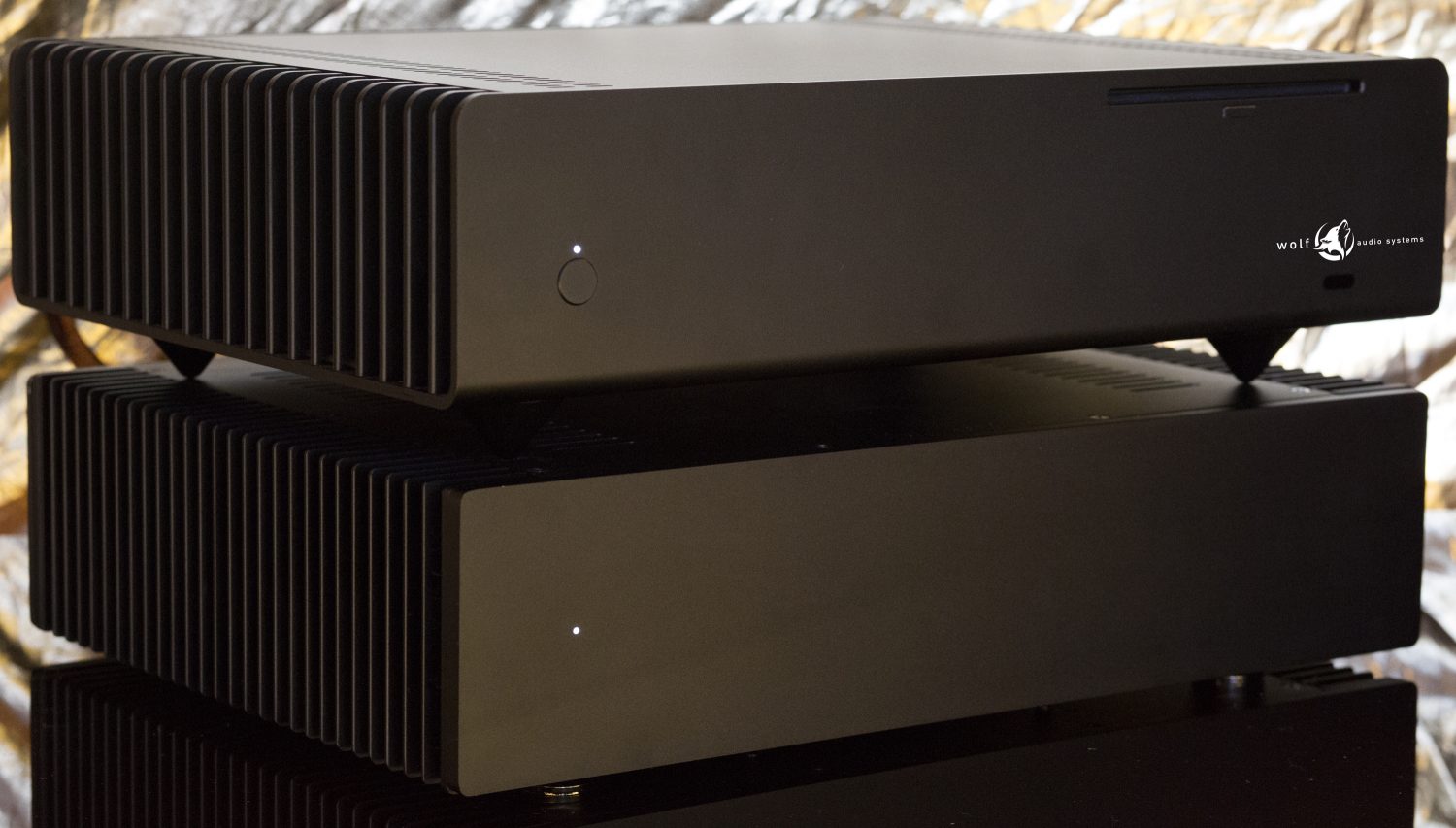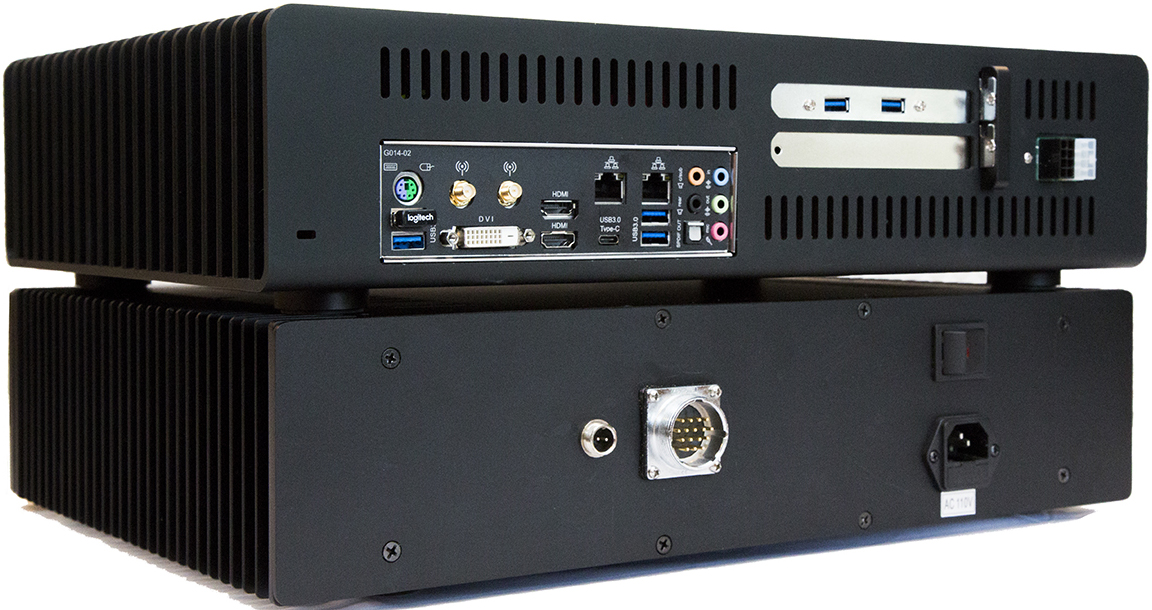My buddies in the local audiophile klatch get a glimpse of my angle on gear when I update them via email. They often are able to come by and listen. Once in a while they rib me, suggesting I’m being too effusive, but when they hear what I’m raving about they typically retract their criticism. The latest comments I sent them were in regard to a system using the Wolf Audio Systems Red Wolf Music Server.
I’m currently using the Kingsound King III speakers with a phenomenal audio server, the Red Wolf. Wow, is this an eye-opening product. Dominates playback from all other sources to date. This is a computer on audio steroids and it’s soooooo powerful and smooth sounding, very addicting.
The AVM Ovation SA 6.2 amps are also tremendous; the combination is easy on the ears. This will be a system very painful to rip apart. It’s so emotionally gratifying to hear, it’s a real pleaser.
I don’t often let my emotions dictate my appreciation of an audio system; that’s usually because most systems don’t touch my emotions so deeply. They can be beautiful, but capturing the ephemeral spirit of the music is not an easy thing. Perhaps one in 25 rigs I hear at shows accomplishes that feat. Perhaps one in ten that I build provides an emotionally compelling connection. When one has extremely high standards of performance, an emotionally fulfilling connection to the performance of a system is not a given.
The emotional connection is likely not going to happen when the source is inadequate, no matter what is happening downstream. I do not subscribe to the “source is most important” philosophy of system building, wherein one piles much money and effort into it at the expense of amplification, cabling or speakers. That is a recipe for mediocrity, as is the case when any aspect of the system is overlooked. However, the principle that the signal cannot recover from a poor source is true. Seemingly, when using digital sources such potential inadequacies would be mitigated, but in real world use those ones and zeros sound radically different when emanating from different digital sources! What follows is discussion of an excellent digital source, the Red Wolf Red Wolf Music Streamer/Server.
About Wolf Audio Systems
Wolf Audio Systems is the creation of Joe, David and Fred Parvey. Joe is an IT systems architect who has designed computer networks containing thousands of servers, and programmed and configured the automation solutions that manage them. So, I guess the guy knows something about how a computer works!
Wolf was initially founded as an R&D business, but Joseph’s early audiophile server designs were so coveted and requested by friends and family that he thought he would explore it further. Joe sees the audiophile landscape as being harmed by the move to file playback. However, he also feels that with the correct solution, an extreme server for audio and video, a new generation of listeners can move from ear buds back to audio systems. He enthuses, “Just like the introduction of wolves was ultimately the recipe for restoring balance to Yellowstone, our products combined with our efforts to evangelize Hi-Res audio and get people back into stereo room listening…is what really drives Wolf.”
Initially, Joe was a skeptic on such things as premium cabling and internal wiring upgrades. That changed dramatically when he started making comparisons. The auditioning of a new speaker prompted a comparison between his old speaker wire and a loaner set from a local stereo shop. The difference was obvious, so Joe began to compare power cables, receptacles, interconnects, and USB cables. That led to reworking the interior of his servers. The change can be so profound that even a seemingly small difference in the materials can influence the sound. Joe states, “We tried many sources for our copper, and finally settled on Audience’s Ohno copper for its quality… for someone who was in the ‘copper is copper’ camp I’ve certainly performed a 180.”
That turnaround on the matter of parts quality informs the construction of Wolf Audio Systems servers. Joe wishes to capture top honors not only in regards to sound but also video. To do that, the machine has to be overbuilt and super-fast in signal processing. The manifestation of that change of perspective is evidenced by the Red Wolf being built not just as a computer, but literally also as an audiophile component. The telltale sign is the separate linear power supply housed in its own chassis and connected by a robust dedicated umbilical, which also uses Audience’s copper. Inside the power supply are R-Core transformers, and each power supply is tuned to achieve the lowest output ripple.
Digital treatment is conducted from a purist standpoint. While the Red Wolf can oversample and even process DSD to more than 8 channels at once, Joe says, “… the audiophile purist in me revolts at the thought. The DAC should do a lot of the heavy lifting.” Joe invites comparisons to other servers: “One of our most effective selling methods is to take the system to a home of a potential customer and plug it in next to their home-brew rig or a competing product…The fact is your laptop, no matter how awesome it is, was not built with an audiophile purpose in mind.”
My experience previously with comparison of Jim Salk’s Salk Sound StreamPlayer Gen III to an Apple Mac Mini with HQ Player up-conversion software bears that out. The StreamPlayer Gen III, without any fine-tuning of the system, trounced the Mac Mini experience. Not intending to disparage StreamPlayer fans, as there is a $5K difference between it and the Red Wolf, the result was similar. The Red Wolf did the same task as the StreamPlayer III, playing back files sourced from Tidal through either JRiver or Roon, but the sound quality was of an order higher in quality. In this particular instance, money does buy you a better computer and a better sonic result. I am not at the point where I can afford an $8K server for music, but if I were I would use the Red Wolf.
It must be kept in mind, however, that the Red Wolf is a dedicated server of audio and video, the video component being as cutting edge as the audio. Though I did not spend time assessing the video performance of the Red Wolf intently, I did notice the instantaneous nature and very high quality appearance of visuals and clips played on an oversized display monitor that I plopped down near my listening chair so that I could command the JRiver software. Wolf Audio is all about running the customized JRiver as the user interface. The Red Wolf experience requires a wireless keyboard and mouse, as well as a screen acting as the operational window for the user. Aside from the power button, there are few operational features on the face of the unit; the only other control is for the tray motor of the internal optical drive.
I hasten to add that the integral hard drive is stinkin’ fast! I attempted to add a folder of music to the Red Wolf’s hard drive and it did so with such an instantaneous nature that I thought the command had failed; there was no waiting, no timing icons to see. I tried 2 more times and consequently completely messed up the music library, as the files had been added three times. Joe had to sort it all out, which he did efficiently and pleasantly by using granted remote internet access to the Red Wolf.
Customer service is a huge benefit to the Wolf Audio Systems customer. Joe is so connected and attentive that he helped out with technical issues at his suppertime, bath time for his young children, while on the road from a show, practically anytime. I did not push for immediate service, but Joe always wanted resolution as close to immediately as possible. This is a very valuable benefit to the customer because the Media Center software built into the Red Wolf is tantalizingly capable. Configurability of the Red Wolf is off the charts, and anyone who wants to program the living daylights out of their server will think they had died and gone to Heaven. I went the other direction, using a Samsung Galaxy S tablet as a remote. All that was necessary was opening either JRiver or Roon on the Red Wolf and then opening the corresponding app on the tablet (I used Tidal’s premium sound service for both), then using the simpler interface on the tablet to conduct listening sessions. (Per Joe: While a small inaccuracy, the distinction is important; Media Center and Roon both start when the server does, so you should only need to turn it on and start the tablet app – no need for monitors or keyboards. -Pub.) I suggest that route to anyone who finds too many options in a server a bad thing. The Red Wolf can be a friend to wannabe studio technician type listeners as well as to couch potato, “let me run the entire thing with a volume control,” types. Joe will help set up either preference, but I shouldn’t commit him to programming every whim you have for playback of your files. (Per Joe: Configurations like this happen during the first time setup to dial the system in according to the users preferences, or during follow-up phone calls, which we expect and encourage. -Pub.)
- (Page 1 of 2)
- Next page →


